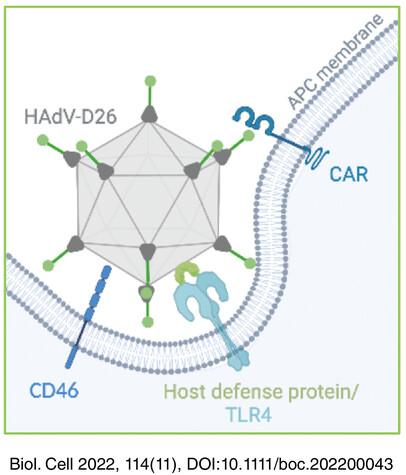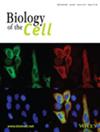皮肤抗原呈递细胞上的腺病毒受体
IF 2.4
4区 生物学
Q4 CELL BIOLOGY
引用次数: 1
摘要
皮肤是人体最大的器官,是抵御许多病原体的第一道物理和免疫防线的一部分。了解皮肤抗原提呈细胞(apc)如何对病毒或基于病毒的疫苗作出反应,对于开发抗病毒药物以及高效和安全的疫苗至关重要。在这里,我们讨论常驻和招募皮肤apc参与腺病毒的方式和对先天免疫反应的影响。本文章由计算机程序翻译,如有差异,请以英文原文为准。

Adenovirus receptors on antigen-presenting cells of the skin
Skin, the largest human organ, is part of the first line of physical and immunological defense against many pathogens. Understanding how skin antigen-presenting cells (APCs) respond to viruses or virus-based vaccines is crucial to develop antiviral pharmaceutics, and efficient and safe vaccines. Here, we discuss the way resident and recruited skin APCs engage adenoviruses and the impact on innate immune responses.
求助全文
通过发布文献求助,成功后即可免费获取论文全文。
去求助
来源期刊

Biology of the Cell
生物-细胞生物学
CiteScore
5.30
自引率
0.00%
发文量
53
审稿时长
>12 weeks
期刊介绍:
The journal publishes original research articles and reviews on all aspects of cellular, molecular and structural biology, developmental biology, cell physiology and evolution. It will publish articles or reviews contributing to the understanding of the elementary biochemical and biophysical principles of live matter organization from the molecular, cellular and tissues scales and organisms.
This includes contributions directed towards understanding biochemical and biophysical mechanisms, structure-function relationships with respect to basic cell and tissue functions, development, development/evolution relationship, morphogenesis, stem cell biology, cell biology of disease, plant cell biology, as well as contributions directed toward understanding integrated processes at the organelles, cell and tissue levels. Contributions using approaches such as high resolution imaging, live imaging, quantitative cell biology and integrated biology; as well as those using innovative genetic and epigenetic technologies, ex-vivo tissue engineering, cellular, tissue and integrated functional analysis, and quantitative biology and modeling to demonstrate original biological principles are encouraged.
 求助内容:
求助内容: 应助结果提醒方式:
应助结果提醒方式:


